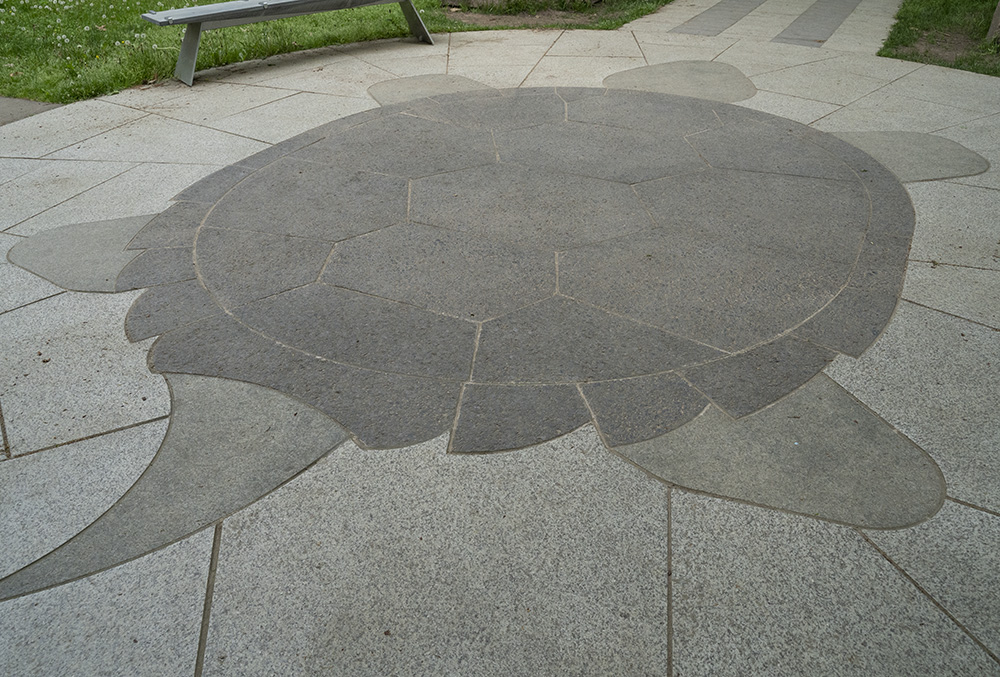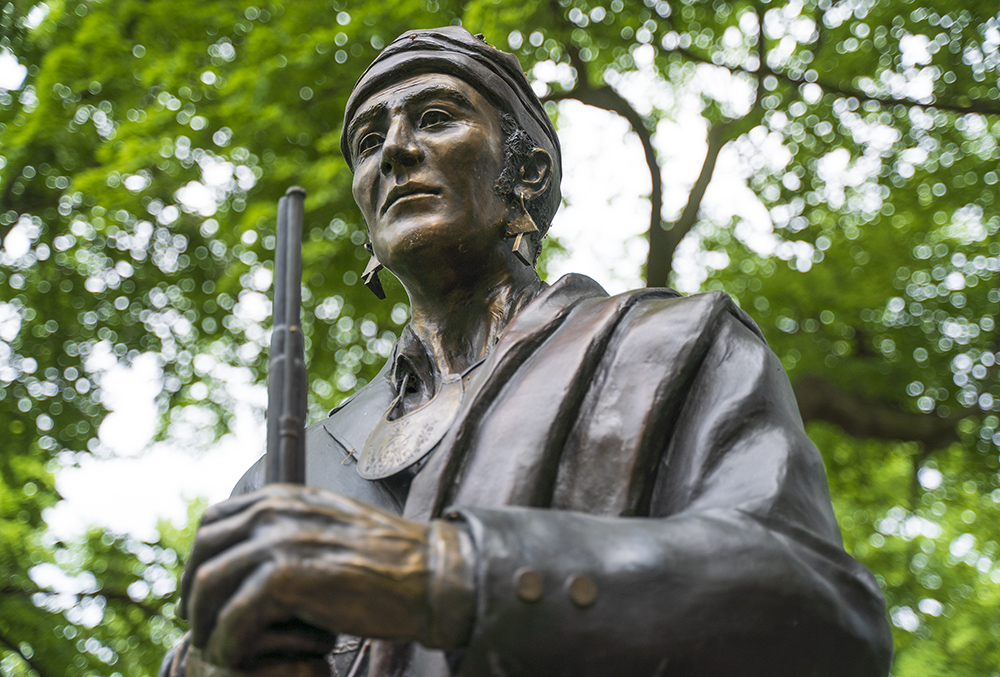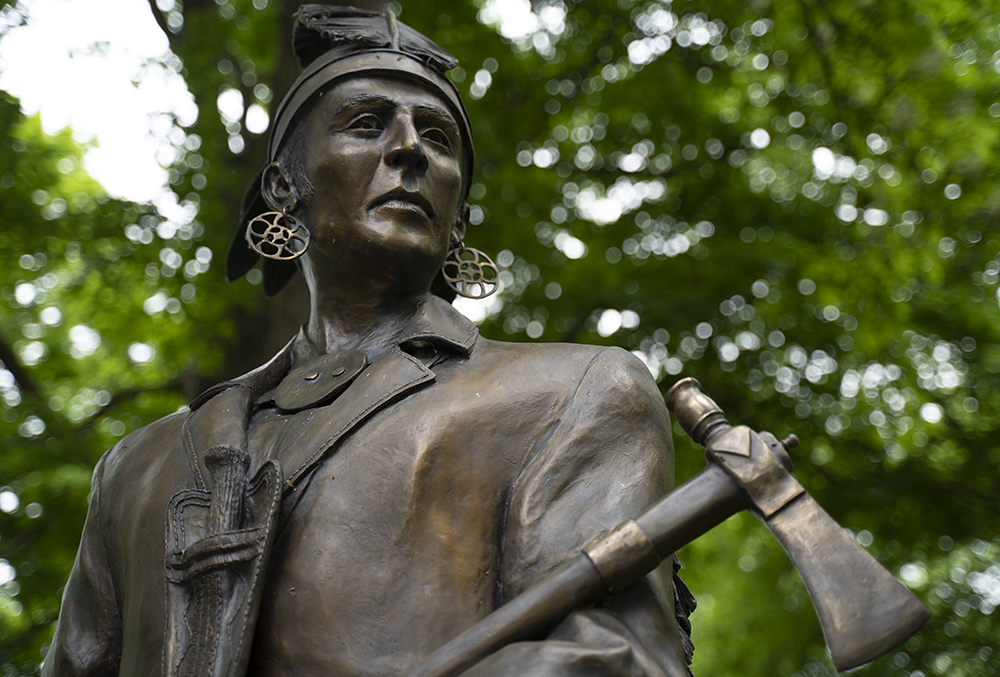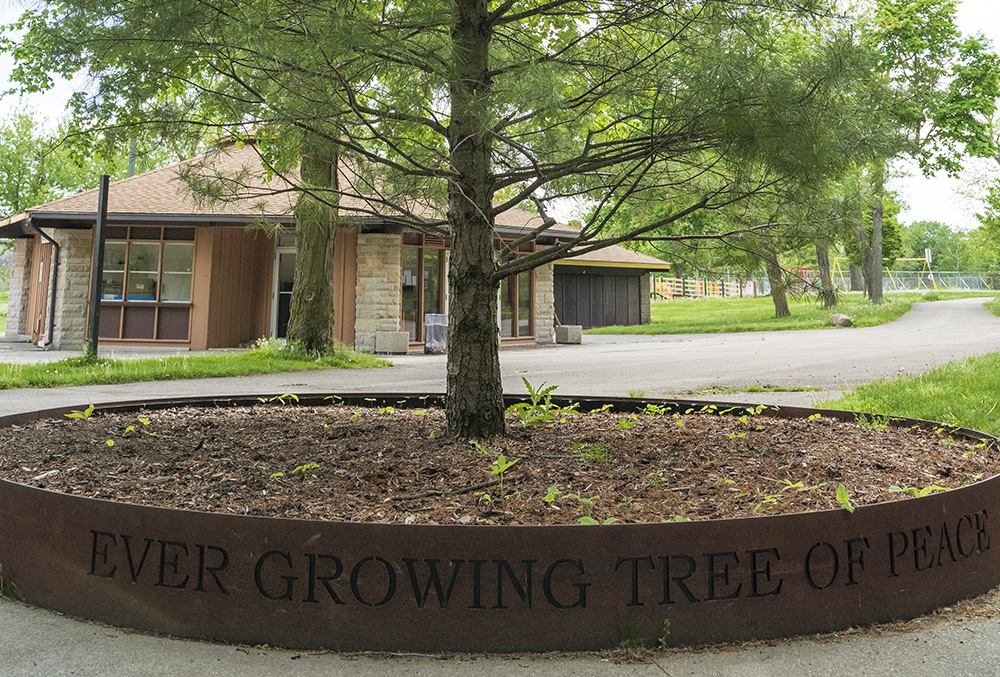A Cultural Experience
Landscape of Nations:
A Cultural & Historic Journey
The Landscape of Nations is a living memorial dedicated to the contributions and sacrifices made by Six Nations and Native Allies on Queenston Heights and equally important, throughout the War of 1812.
A Virtual Visit of the Landscape of Nations

An introduction
The Battle of Queenston Heights took place here during the War of 1812 on October 13. This significant battle was responsible for the death of Major-General Sir Isaac Brock along with his Canadian aide-de-camp, Lieutenant Colonel John MacDonell. The Battle of Queenston Heights was all but lost for the defenders of Canada until the arrival of Six Nations warriors on these fields. They turned the tide of this battle and many more during the War of 1812.
The memorial also recognizes the historic ceremony of peace and reconciliation held in Niagara on August 31 and September 1, 1815 that restored peace among the Native nations who fought on opposing sides.
The Turtle
The turtle symbol is the focal point as you walk into the memorial. In the Six Nations creation story, the earth was created on the back of a giant turtle when Skywoman fell from the sky. She fell with the help of geese and ducks that gently set her on the back of a turtle. Dirt was pulled from the ocean floor by the muskrat that was given to Skywoman to spread on the turtle’s back which is the ground we walk upon. Skywoman brought plants with her that are used as medicine and food within the Haudenosaunee culture.


John Norton
Major John Norton (Teyoninhokarawen) was adopted into the Mohawk Nation by Joseph Brant. He led fighters from Six Nations of the Grand River into battles at Queenston Heights, Stoney Creek and Chippawa. His journal chronicles his 1,000 mile journey from Upper Canada to the homelands of his Cherokee father, stories of Haudenosaunee culture and history, and Haudenosaunee involvement in the War of 1812.
John Brant
John Brant (Ahyouwa’ehs) was the son of Joseph Brant.
Along with John Norton, he led warriors at the Battle of Queenston Heights along with other engagements. He was a strong advocate for building schools, he was appointed resident superintendent for the Six Nations of the Grand River, he was elected to the Legislative Assembly of Upper Canada for Haldimand and his mother appointed him as a traditional chief, Tekarihoga.


The Longhouse
The Six Nations refer to themselves as Haudenosaunee, or “People of the Longhouse.”
The longhouse is a traditional architectural structure and a symbol of the member nations living under one Great Law of Peace.
Two-Row Wampum Belt
The walkway represents the Two-Row Wampum Belt, the first treaty between the Haudenosaunee and Europeans, representing their agreement to co-exist on parallel paths.
Wampum are tubular white or purple beads made from the quahog shell that were mainly found on the eastern shore of North America. Historically handmade by Indigenous People, the tradition of hand-making these beads are time consuming for amateurs and often cracked during the process. These beads were woven into belts that signified an agreement or alliance between two or more parties; Indigenous or non-Indigenous.
Among the Haudenosaunee there are very few people who can read and recite these belts from memory and is taught by oral tradition.


Memory Circle
At this gathering place, visitors are asked to remember the contributions of Six Nations and Native Allies who participated in the War of 1812. It’s an opportunity for guests to commemorate the historic ceremony of Peace and Reconciliation held at Niagara on August 31 and September 1, 1815.
Eight limestone walls, sourced from the Queenston Quarry, emanate from the circle like a sunburst. Inside the circle, sweetgrass is grown and is a sacred medicine among the Haudeonsaunee and other Indigenous Nations across North America.
Tree of Peace
An eastern white pine stands as a symbol of the Haudenosaunee constitution known as the Great Law of Peace. It also stands as a living memorial dedicated to the contributions and sacrifices made by Six Nations and Native Allies on Queenston Heights and throughout the War of 1812.
It inspires citizens to learn and acknowledge the critical role that Indigenous People played in the defense of this land and the ability of Canada to remain free.
This symbol is represented on the Haudenosaunee ‘flag’ as the middle symbol out of the five symbols. Originally, it was a wampum belt that was modernized into a flag to symbolize the Haudenosaunee.


 Close and
Close and